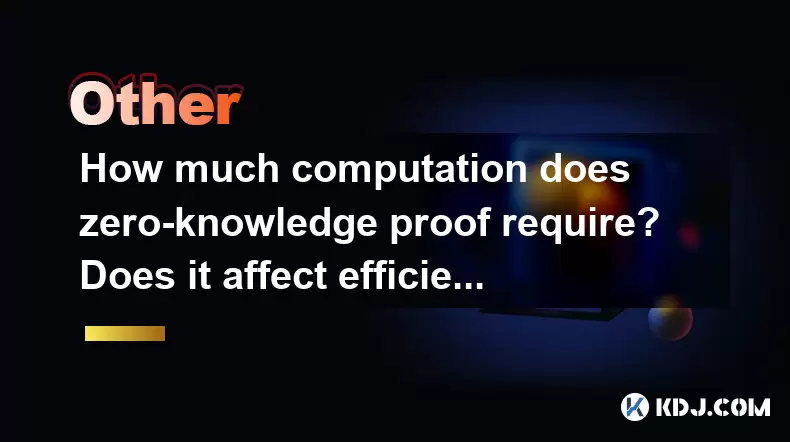-
 Bitcoin
Bitcoin $118400
0.47% -
 Ethereum
Ethereum $3836
2.20% -
 XRP
XRP $3.157
2.98% -
 Tether USDt
Tether USDt $0.9999
-0.03% -
 BNB
BNB $801.5
1.31% -
 Solana
Solana $180.9
2.07% -
 USDC
USDC $0.9999
-0.02% -
 Dogecoin
Dogecoin $0.2225
2.50% -
 TRON
TRON $0.3285
-1.02% -
 Cardano
Cardano $0.7789
2.60% -
 Hyperliquid
Hyperliquid $43.60
2.39% -
 Sui
Sui $3.892
4.41% -
 Stellar
Stellar $0.4229
3.34% -
 Chainlink
Chainlink $18.01
3.98% -
 Hedera
Hedera $0.2745
6.77% -
 Bitcoin Cash
Bitcoin Cash $582.3
3.38% -
 Avalanche
Avalanche $23.77
1.04% -
 Ethena USDe
Ethena USDe $1.001
0.01% -
 Toncoin
Toncoin $3.493
3.59% -
 Litecoin
Litecoin $110.0
2.48% -
 UNUS SED LEO
UNUS SED LEO $8.936
-0.37% -
 Shiba Inu
Shiba Inu $0.00001304
2.49% -
 Uniswap
Uniswap $9.999
1.09% -
 Polkadot
Polkadot $3.897
3.26% -
 Monero
Monero $308.6
-0.83% -
 Dai
Dai $0.9999
-0.01% -
 Bitget Token
Bitget Token $4.504
-0.04% -
 Pepe
Pepe $0.00001154
2.95% -
 Cronos
Cronos $0.1471
3.06% -
 Ethena
Ethena $0.6691
19.53%
How much computation does zero-knowledge proof require? Does it affect efficiency?
Zero-knowledge proofs enhance privacy in cryptocurrencies but face challenges with high computational costs, impacting scalability and energy use.
May 16, 2025 at 09:56 am

Zero-knowledge proofs (ZKPs) are cryptographic protocols that allow one party to prove to another that a given statement is true, without revealing any information beyond the validity of the statement itself. The computational requirements of zero-knowledge proofs and their impact on efficiency are crucial considerations for their practical application in the cryptocurrency space.
Understanding Zero-Knowledge Proofs
Zero-knowledge proofs are a cornerstone of privacy-preserving technologies in blockchain and cryptocurrency systems. They enable transactions to be verified without exposing sensitive information, which is essential for maintaining user anonymity and security. The concept of ZKPs was first introduced in the 1980s, but it has gained significant traction in recent years with the rise of privacy-focused cryptocurrencies like Zcash.
Computational Requirements of Zero-Knowledge Proofs
The computational complexity of zero-knowledge proofs can vary depending on the specific protocol used. Generally, there are two main phases in a ZKP system: the proof generation phase and the verification phase.
Proof Generation Phase: This phase involves the prover creating a proof that a statement is true. The computational cost here can be high because the prover needs to perform complex calculations to ensure the proof is valid. For instance, in the case of zk-SNARKs (Zero-Knowledge Succinct Non-Interactive Arguments of Knowledge), the prover must solve a series of polynomial equations, which can be computationally intensive.
Verification Phase: This phase is typically much less demanding. The verifier only needs to check the proof against a set of public parameters, which requires significantly less computational power. This asymmetry in computational requirements is one of the strengths of ZKPs, as it allows for quick and efficient verification.
Impact on Efficiency
The efficiency of zero-knowledge proofs is a critical factor in their adoption within cryptocurrency systems. Here are some key points to consider:
Scalability: High computational costs for proof generation can limit the scalability of blockchain networks that rely on ZKPs. For example, if each transaction requires a significant amount of computational power to generate a proof, the network's throughput may be reduced.
Energy Consumption: The energy required for proof generation can also be a concern, especially in the context of environmentally sustainable cryptocurrencies. High energy consumption might deter some users and developers from adopting ZKP-based systems.
User Experience: From a user's perspective, the time taken to generate a proof can impact the overall user experience. If users have to wait longer for transactions to be processed due to ZKP computations, it may affect the usability of the system.
Optimizations and Improvements
Efforts to improve the efficiency of zero-knowledge proofs are ongoing. Researchers and developers are exploring various techniques to reduce the computational overhead:
zk-STARKs: Unlike zk-SNARKs, which rely on trusted setups, zk-STARKs (Zero-Knowledge Scalable Transparent Arguments of Knowledge) do not require a trusted setup and can be more efficient in certain scenarios. They use different mathematical constructs that can lead to faster proof generation.
Batching: Some protocols allow for the batching of multiple proofs into a single proof, which can reduce the overall computational load. This technique is particularly useful for blockchain networks where multiple transactions need to be verified simultaneously.
Hardware Acceleration: The use of specialized hardware, such as GPUs or ASICs, can significantly speed up the proof generation process. This approach is being explored by some cryptocurrency projects to enhance the performance of their ZKP implementations.
Practical Applications in Cryptocurrencies
Zero-knowledge proofs have been successfully integrated into several cryptocurrency projects, demonstrating their feasibility despite the computational challenges:
Zcash: Zcash uses zk-SNARKs to provide optional privacy for transactions. While the computational cost of generating proofs is significant, the network has managed to maintain a balance between privacy and efficiency.
Ethereum: The Ethereum community has been exploring the use of ZKPs for scaling solutions like zk-Rollups. These solutions aim to process transactions off-chain and then use ZKPs to prove their validity on the Ethereum mainnet, potentially improving the network's scalability.
Filecoin: Filecoin uses ZKPs to ensure the integrity of data stored on its network. The proof generation process is crucial for verifying that data is stored correctly without revealing the data itself.
Balancing Computational Cost and Security
The trade-off between computational cost and security is a key consideration in the design of ZKP systems. While more complex proofs can offer higher levels of security, they often come at the expense of increased computational requirements. Developers must carefully balance these factors to create systems that are both secure and efficient.
For instance, in the context of privacy coins, the level of anonymity provided by ZKPs must be weighed against the computational resources needed to maintain that privacy. Similarly, in blockchain scaling solutions, the efficiency of ZKPs can determine the feasibility of implementing such technologies on a large scale.
Frequently Asked Questions
Q1: Can zero-knowledge proofs be used to improve transaction privacy without significantly impacting network performance?
A1: Yes, zero-knowledge proofs can enhance transaction privacy while maintaining acceptable network performance. Techniques like zk-STARKs and batching can help reduce the computational overhead, making ZKPs more viable for large-scale applications. Additionally, hardware acceleration can further improve the efficiency of proof generation.
Q2: Are there any cryptocurrencies that have successfully implemented zero-knowledge proofs without compromising efficiency?
A2: Yes, several cryptocurrencies have successfully implemented ZKPs. Zcash, for example, uses zk-SNARKs to provide optional transaction privacy, and it has managed to maintain a balance between privacy and efficiency. Ethereum's zk-Rollups also demonstrate the potential for ZKPs to improve scalability without compromising performance.
Q3: How do zero-knowledge proofs affect the energy consumption of blockchain networks?
A3: Zero-knowledge proofs can increase the energy consumption of blockchain networks, particularly during the proof generation phase. However, the verification phase is typically less energy-intensive. Efforts to optimize ZKP algorithms and use energy-efficient hardware can help mitigate these concerns.
Q4: What are the main challenges in implementing zero-knowledge proofs in cryptocurrency systems?
A4: The main challenges include the high computational cost of proof generation, the need for scalable solutions, and balancing privacy with efficiency. Additionally, the complexity of ZKP protocols can make them difficult to implement and maintain, requiring specialized knowledge and resources.
Disclaimer:info@kdj.com
The information provided is not trading advice. kdj.com does not assume any responsibility for any investments made based on the information provided in this article. Cryptocurrencies are highly volatile and it is highly recommended that you invest with caution after thorough research!
If you believe that the content used on this website infringes your copyright, please contact us immediately (info@kdj.com) and we will delete it promptly.
- Pudgy Penguins Price Prediction: Buying Opportunity or Insider Dump?
- 2025-07-31 18:50:35
- Penny Coin Power: Unearthing 20x Potential in Undervalued Crypto
- 2025-07-31 20:10:14
- Shrapnel, GalaChain, and China Gaming: A New Frontier
- 2025-07-31 19:10:35
- Mutuum Finance, Bitcoin, and Market Analysis: Decoding the Latest Trends
- 2025-07-31 19:30:13
- Dogecoin Howl: Bullish Signals and Analyst Bites – Is the Meme Coin Ready to Pounce?
- 2025-07-31 18:30:16
- Decoding Crypto Presales, Ethereum's Role, and Navigating a Tricky Altcoin Season
- 2025-07-31 18:30:16
Related knowledge

How to start a business using blockchain?
Jul 28,2025 at 12:36am
Understanding the Basics of Blockchain TechnologyBefore diving into the process of starting a business using blockchain, it's crucial to understand wh...

What is a token on the blockchain?
Jul 21,2025 at 07:00am
Understanding the Concept of a TokenIn the realm of blockchain technology, a token is a digital representation of an asset or utility that exists on a...

Can blockchain be used for identity verification?
Jul 18,2025 at 02:14pm
Understanding Identity Verification in the Digital AgeIn the modern digital landscape, identity verification has become a critical component for ensur...

What is a consensus mechanism in blockchain?
Jul 21,2025 at 03:01am
Understanding the Basics of Consensus MechanismsA consensus mechanism is a critical component of any blockchain network. It refers to the process by w...

How to explain blockchain to someone with no tech background?
Jul 18,2025 at 11:08pm
Understanding the Basics of BlockchainTo explain blockchain to someone with no tech background, it's essential to start with simple analogies and avoi...

Who invented blockchain technology?
Jul 23,2025 at 01:28am
Origins of Blockchain TechnologyBlockchain technology did not emerge from a single inventor or institution. Instead, it evolved through a series of ac...

How to start a business using blockchain?
Jul 28,2025 at 12:36am
Understanding the Basics of Blockchain TechnologyBefore diving into the process of starting a business using blockchain, it's crucial to understand wh...

What is a token on the blockchain?
Jul 21,2025 at 07:00am
Understanding the Concept of a TokenIn the realm of blockchain technology, a token is a digital representation of an asset or utility that exists on a...

Can blockchain be used for identity verification?
Jul 18,2025 at 02:14pm
Understanding Identity Verification in the Digital AgeIn the modern digital landscape, identity verification has become a critical component for ensur...

What is a consensus mechanism in blockchain?
Jul 21,2025 at 03:01am
Understanding the Basics of Consensus MechanismsA consensus mechanism is a critical component of any blockchain network. It refers to the process by w...

How to explain blockchain to someone with no tech background?
Jul 18,2025 at 11:08pm
Understanding the Basics of BlockchainTo explain blockchain to someone with no tech background, it's essential to start with simple analogies and avoi...

Who invented blockchain technology?
Jul 23,2025 at 01:28am
Origins of Blockchain TechnologyBlockchain technology did not emerge from a single inventor or institution. Instead, it evolved through a series of ac...
See all articles

























































































